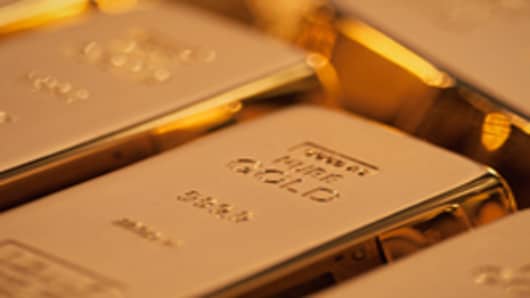All the major countries in the world are in a race to debase their currencies in order to restart their economies. Either economic growth returns or—as some doomsayers predict—the 40-year run of fiat currencies ends.
And if under this worst case scenario the solution was to return to the gold standard of the Nixon years, the price of bullion would be worth $10,000-plus, six-times the current price, according to Paul Brodsky, co-managing member of QB Asset Management company and a self-professed ‘Gold Bug.’
To be sure, a return to the exact terms of the Bretton Woods Monetary Agreement is a near political impossibility because of the traumatic devaluation in the U.S. dollar it would cause. Yet, a move away from debt-based currencies to a system somewhat based on hard assets is not out of the picture if the global economy doesn’t recover or policy makers don’t allow for a painful deleveraging, some investors say.
“Policy makers are holding a burning match,” Brodsky said in a speech to a packed crowd at The Big Picture conference Tuesday in New York. “Baseless currencies follow the tyranny of short-term politics and so shall this."
The country’s monetary base (currency in circulation plus bank reserves held at the Fed) has tripled to $2.68 trillion, following the completion of QE2. Dividing this monetary base by the approximate 261.5 million ounces gold the U.S. Treasury is believed to own gets Brodsky to the $10,000 an ounce figure.
While “politics are likely to intervene” to stop gold from skyrocketing to this destabilizing price, that doesn’t mean bullion can’t keep surging from current levels as the devaluations continue, said Brodsky.
The money manager’s comments were par for the course at The Big Picture conference, named after the popular blog run by Barry Ritholtz.
The conference featured panels on high frequency trading, the impact of social networks and other contrarian topics one would never hear at a gathering held by a mainstream retail brokerage. Here, attendees were more likely to exchange twitter handles than business cards.
So no wonder that Brodsky’s gold prediction was among the most-talked about on the sidelines of this conference at the New York Athletic Club.
“Economic policy makers across the political spectrum have successfully maintained the debt-based monetary system since 1971,” said the money manager. “To do this they have had to marginalize the one competing currency capable of displacing it: gold.”
For the best market insight, catch 'Fast Money' each night at 5pm ET, and the ‘Halftime Report’ each afternoon at 12:30 ET on CNBC. Follow @CNBCMelloy on Twitter.
______________________________________________________
Got something to say? Send us an e-mail at fastmoney-web@cnbc.com and your comment might be posted on the Rapid Recap! If you'd prefer to make a comment, but not have it published on our Web site, send your message to fastmoney@cnbc.com.



